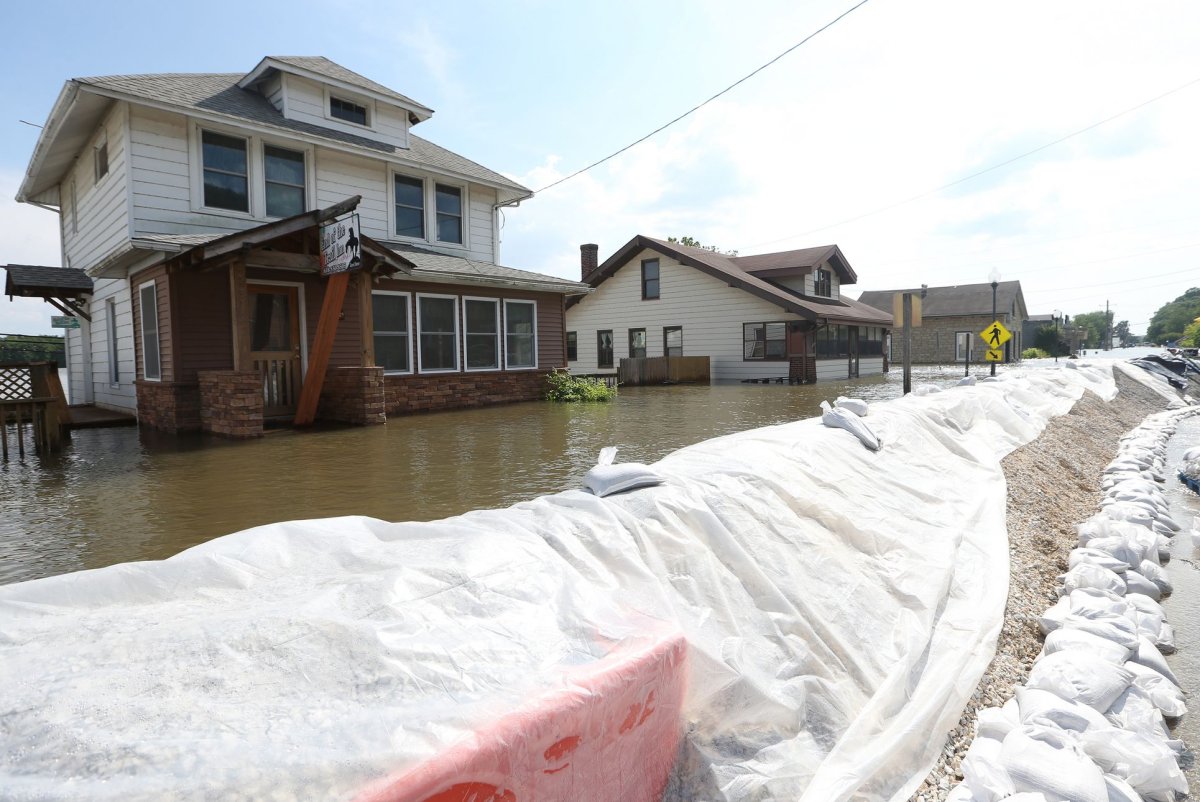Sept. 5 (UPI) — Minority groups, such as Hispanic and Native American communities, face a higher likelihood of residing behind insufficient levees designed to protect against floodwaters, as per a recent study report.
The United States houses several thousand miles of levees, with some originally built by early settlers in the 1700s to safeguard crops. However, they were not constructed to become critical infrastructure shielding the homes of millions of Americans.
Researchers from Tufts University and Mississippi State University have uncovered that there is a “substantially larger population of disadvantaged communities” residing behind deteriorating levees, as stated in their study published in the open-access journal Earth’s Future.
The journal article states, “Flooding patterns are exacerbated by anthropogenic climate change in several regions, posing a significant risk to the economy, safety and well-being of the nation.”
The study highlights the disproportionate impact of flooding on historically underserved and socially vulnerable communities.
Minority groups are more likely to occupy low-lying areas with inadequate drainage systems, thereby increasing their vulnerability to flooding.
In order to derive their conclusions, the researchers utilized percent disparity rates for different demographic groups.
Percent disparity is a statistical measure that quantifies the difference between the values of two groups. In this study, it represents the percentage of each vulnerable group of interest residing in a leveed area compared to a non-leveed area within the same geographic level.
For example, to determine the disparity rate of the Black population in a specific state, the researchers subtracted the number of Black individuals residing in a non-leveed area from the number of Black individuals residing in a leveed area within the same location. This number was then divided by the number of Black individuals in the non-leveed area, multiplied by 100 to generate the percentage.
These figures were compared with other demographic groups to assess which groups were more likely to have residences in flood-prone areas behind subpar levees.
Hispanic individuals exhibited the highest disparity rate among minority groups at the national level, standing at 40%. However, Black populations experienced higher disparities in the Midwest and Southeast regions.
The researchers noted, “The Northeast and West displayed the greatest inequitable representation in leveed communities, with an overrepresentation of disadvantaged groups behind levees at 57% and 51%, respectively,” according to a news release.
Correlation statistics conducted by the researchers also revealed that leveed areas with a high percentage of self-identified Hispanics tend to have higher poverty levels.
Lead author Farshid Vahedifard acknowledged the complexity of the issue, stating, “No matter how much money you have, you can’t just say, ‘Okay, now let’s rebuild this.’ The network is too extensive. But there are other ways we can reduce risk to these communities.”
Vahedifard recognized that the 2022 Jobs Act, supported by President Joe Biden’s administration, had allocated $1.2 billion in funding for infrastructure projects aimed at assisting minority communities affected by failing levees.
“No matter how much funding we get, there’s still a greater need,” Vahedifard emphasized. “That’s why it’s crucial for us to identify our priority areas, the locations that face the highest risk.”



